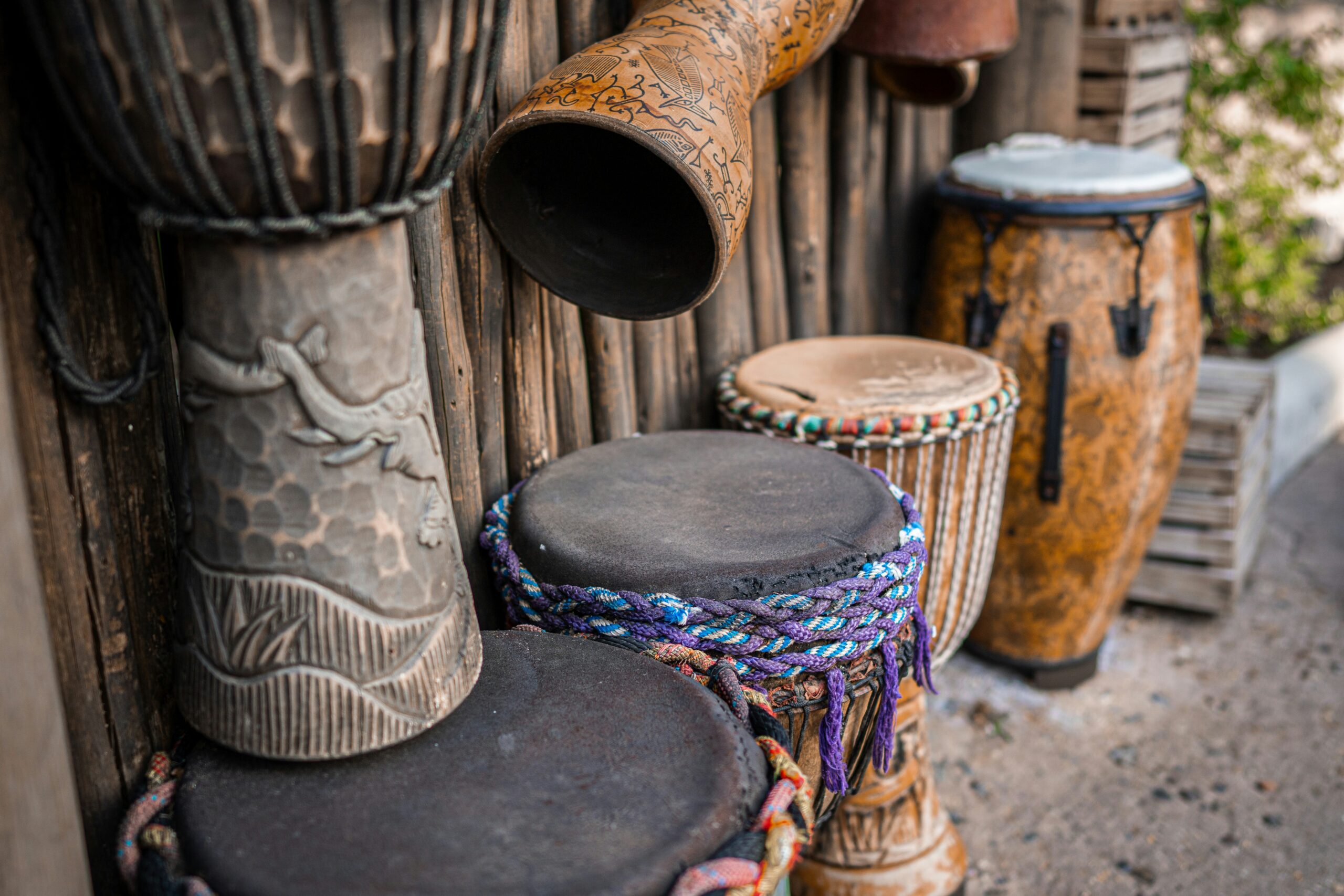The increase in cracked or repaired djembe drums we see from West Africa can be attributed to several factors:
1. Lack of Proper Drying Time
Traditional methods of drying wood involve allowing it to season naturally over several years. However, to meet high demand, some drum makers might be using wood that hasn’t been properly dried, leading to cracks as the wood continues to dry and shrink after carving.
2. Rushed Production
Meeting quotas can lead to rushed carving and construction. If drum makers are pressured to produce large quantities quickly, they might not spend enough time ensuring the wood is properly dried and stabilized.
3. Lower Quality Wood
Higher quality, properly aged wood can be more expensive and harder to source. As a result, some drum makers might resort to using lower quality or improperly aged wood to cut costs or simply due to availability issues.
4. Environmental Conditions
Variations in climate and changes in environmental conditions can also affect the stability of the wood. If the wood is exposed to significant changes in humidity or temperature during transport or storage, it can lead to cracking.
Impact of Cracks and Repairs
Sound Quality
Cracks or repairs can affect the sound quality, but it largely depends on the extent and location of the damage. Small, well-repaired cracks often don’t significantly impact the sound and can sometimes add character to the drum. Some drummers prefer the sound of older, repaired drums as they can develop a unique tonal quality over time.
Structural Integrity
Deep cracks can compromise the structural integrity of the drum. If a drum is heavily cracked, it may not withstand the tension of the skin as well, potentially leading to further damage.
Aesthetics and Personal Preference
Some drummers might prefer the look and feel of a pristine, new drum, while others might appreciate the history and character of a repaired drum.
Out-of-Round Drums Being out of round can affect how evenly the skin is tensioned, potentially leading to uneven tuning and inconsistent sound quality. However, many drummers find that minor deviations from a perfect circle do not significantly impact playability or sound.
Thicker Skins Thicker skins pulled tighter can add more tension to the shell, increasing the likelihood of cracking if the wood isn’t properly aged or dried. However, they can also produce a higher, more resonant sound, which many drummers prefer. But your hands may eventually pay the price. However, that’s another story 🙂
Ultimately, the impact of cracks, repairs, and being out of round on a drum’s performance and sound quality is subjective. Many drummers find that a well-repaired drum can sound as good or better than a new one, and minor imperfections can add character and uniqueness to the instrument. This is just my opinions. What are your thoughts?

